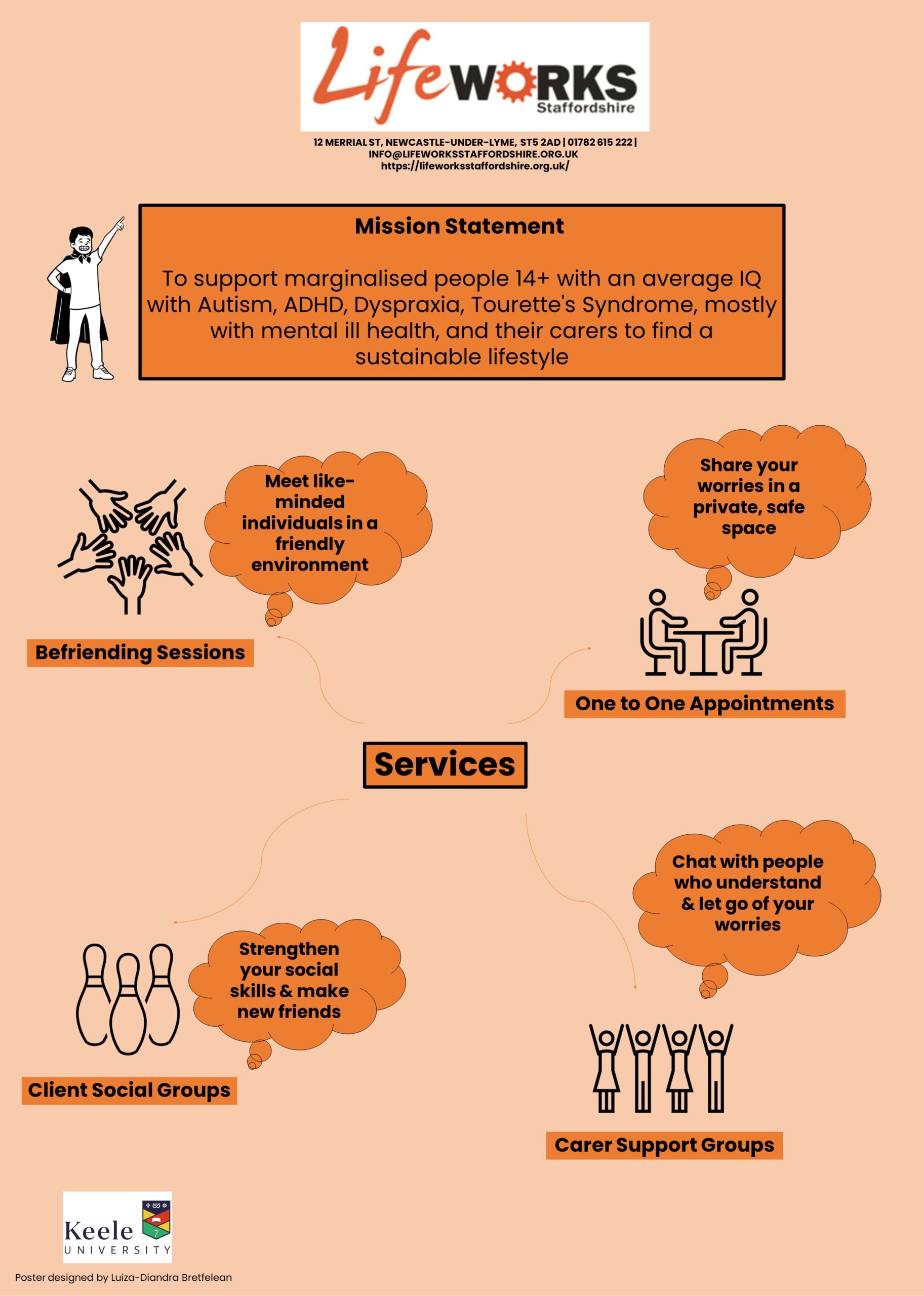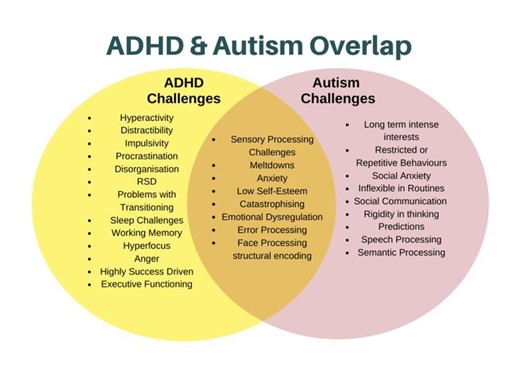


Due to the ‘hidden’ nature of the condition it is difficult to recognise someone on the spectrum. People generally show no outward sign of disability, therefore some individuals are considered more able than they are. This of course, leads to confusion and misunderstanding. However, it is important to remember that people are all different and it is vital not to focus on the negative and what people on the spectrum find it difficult to accomplish but consider what they can accomplish. Indeed, many individuals on the spectrum make hard working, conscientious members of the workforce. Many famous people such as entrepreneur Richard Branson and television personality Guy Martin have a diagnosis. Individuals with extreme proficiency in certain areas are referred to as ‘Savants’.

One other condition that is thought to be strongly related with ADHD is Autism and is that up to 70% of individuals with one condition display traits for the other. Both conditions are often misdiagnosed as one another, as there are some traits that overlap with both conditions but it can often be the case that in fact an individual has both.
The traits of Autism, can mean that an individual goes undiagnosed with ADHD, as some Autistic traits are not seen on the ADHD spectrum and therefore an individual may be instantly dismissed for ADHD.
These can include:
But overlapping traits of both conditions can include:

ADHD is often means that individuals are stereotyped as being disorganised. Whereas, an individual with both conditions (know as being AuDHD) display the traits of ADHD, potentially being hyperactive and impulsive but then have the need for routine, struggle with change, struggle socially not just with RS but also with eye contact and general conversations. Along with some individuals having the inattentive form of ADHD this can make it incredibly hard to diagnose an individual with ADHD. As the more prominent ADHD traits are not always displayed in a person with both conditions.
Professionals Includes useful links and detailed information about Autism.
Chris Packham (on Autism)
Christine Mcguiness (Autism)
Autism Dogs Charity
https://www.autismdogs.co.uk/our-services
Caudwell Children
https://www.caudwellchildren.com/
Autism Parenting Magazine
https://www.autismparentingmagazine.com/
Autism West Midlands
https://www.autismwestmidlands.org.uk/
Space4Autism





